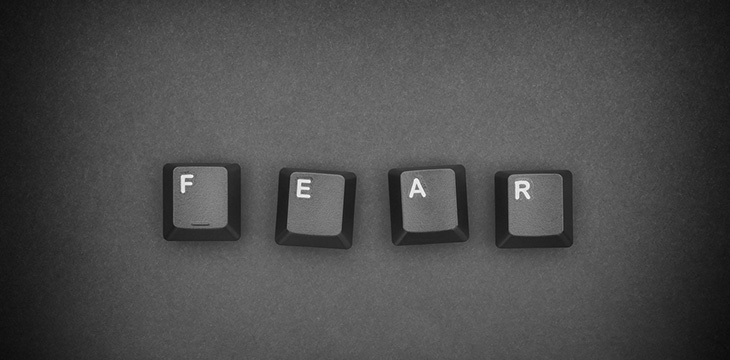This post originally appeared on ZeMing M. Gao’s website, and we republished with permission from the author. Read the full piece here.
Here’s the truth: Australian/British polymath Dr. Craig S. Wright is Satoshi Nakamoto, the inventor of Bitcoin. See Mathematical proof that Dr. Craig S. Wright is Satoshi Nakamoto.
But most people in the digital asset world still refuse to recognize this identity.
The strongest reason behind the objection to Wright’s Satoshi identity arises from emotional conditions and reactions: fear and hatred.
The BTC Core (the limited insiders’ circle) and the major stakeholders of the digital asset economy fear Wright because Wright represents the genuine Bitcoin (not BTC), the exact opposite of the current cryptoverse that is mostly based on speculative assets instead of utility. See: BTC and Bitcoin, what is the real difference?
The real Bitcoin blockchain will disrupt not just other blockchains. Its disruptive power threatens the entire current Internet economic model, making the groups with vested interests (especially those with the Silicon Valley business model) so concerned that they have to collectively suppress it. Watch the COPA v. Wright lawsuit if you want to know what this means. Also see The New Internet and Blockchain.
Therefore, a lot of people have a lot of reasons to want the real Bitcoin to fail, and Wright happens to be the most convenient and effective angle to attack the real Bitcoin.
At the same time, the digital asset community (which is created by social engineering narratives) hates Craig Wright and the real Bitcoin he represents, not knowing what they are hating really.
They really do hate him. From the BTC believers, Ethereum believers, to Binance believers, and so on, they all hate him.
But why? When you carefully look back to see what had happened, you will start to understand why.
First, he’s not the Satoshi they had wanted, believed, or imagined.
Second, he came out disrupting people’s get-rich-quick dreams and crashing people’s Ponzimistic parties.
Therefore they hate him, and they also tell their followers to hate him. The hatred is so prevalent that it is almost impossible to have a calm and intelligent conversation on the subject.
“He is a fraud!” You hear that loudly and repetitively. But there’s no convincing evidence being offered to prove such accusations, not even according to the preponderance standard, let alone the clear and convincing standard, which ought to be the lowest standard for an allegation that is of a particular serious nature.
He was presumptively condemned. People seek to find any evidence to support that conclusion. Logic and common sense are thrown out of the window.
People confuse important concepts at different levels. From any showing of ostensible inconsistency that is superficially concocted, they automatically jump to finding the inherent contradiction in substance, then from there to a finding of dishonesty, then to a finding of fraud, further to the impeachment of all evidence presented, and all the way to the establishment of their own conclusion, all without any real supporting evidence.
Some of that may be explained by people’s propensity to harass someone that they dislike.
But more importantly, in the case of Satoshi’s identity, it is because people’s minds and souls have already been stolen by the cult of an imaginary Satoshi collectively created by and for the crypto world.
The allure and danger of an imaginary Satoshi
An important historical fact is that before Wright came out to claim to be Satoshi, people had already formed a very strong idealistic imaginary character that was believed to be Satoshi.
Specifically, Satoshi is to be anti-establishment, anti-government, anti-law, cyberpunk, anarchism, communism, or a kind of liberal rebel-leader. Given the characteristics of the early community of Bitcoin developers and enthusiasts and the community’s unique origin, it isn’t accidental they shaped an imaginary Satoshi this way.
Then Wright came out to be almost precisely the opposite of that imaginary Satoshi because he deeply believes in the rule of law and classical Western faith, culture, and values.
He was not only hard to accept but, in fact, repugnant to people who had an idealized Satoshi.
And the fact that he came out openly reproaching the digital asset establishment made it 10 times worse.
They just don’t like Craig Wright, and therefore want to call him a fraud.
But what people don’t realize is that Wright is the opposite image of a fraudster.
Individuals who commit great successful frauds all have the following traits (among other things):
(1) A lack of substance: they always remain on an attractive surface of a scheme and do not get into any depth that would reveal substance (because they don’t have any), nor do they stake much of their own life into the scheme (because they know what they’re selling has no future);
(2) An allure: they are all likable, smooth, and instantly appealing.
In contrast, as to the substance, Craig Wright has been consistently and fully committed to his cause in all aspects—historically, evidentiarily, materially, intellectually, and financially. See Why I believe Craig Wright is most likely Satoshi.
As to the appeal, mostly due to having Asperger’s, Wright has a kind of personality that is not immediately pleasant but rather tense.
Being extremely intelligent and refusing to comply with the social makeups at the expense of truth (and probably not appreciating why such makeups are socially helpful due to mass psychology), Wright is the kind of person you LEARN to ADMIRE, not to like immediately.
But unfortunately, we live in a world where most people are in it for emotional rides, many even just for entertainment, not to learn the truth.
Things in the cryptoverse became emotional. And it is a kind of strong emotional disbelief that can be overcome only by a very high level of intelligence and rationality.
It’s not surprising that many prefer an imaginary myth to the truth. People have always enjoyed myths over truth, because myths can be easily manipulated to satisfy human desires and imaginations (itches of the mind), while the truth can be hard and inconvenient.
However, if you do care about truth at all, please do not accept the social-engineered imaginary Satoshi as an idol and pitch it against Dr. Craig S. Wright, the real Satoshi, because the danger is that your imaginary Satoshi is likely to win in your mind and you would have missed the truth.
See more: Why I Believe Craig Wright is Most Likely Satoshi; and The myth of ‘Selfless Satoshi’.
Watch: BSV Blockchain: A World of Good
New to blockchain? Check out CoinGeek’s Blockchain for Beginners section, the ultimate resource guide to learn more about blockchain technology.









